#cerf volant
Explore tagged Tumblr posts
Photo









Je reviens à mon projet de présenter la plupart de mes 55000 photos (nouveau compte approximatif. On se rapproche du présent !).
2016. Marseille en avril. Les quartiers de Montredon et la Madrague-de-Montredon
- les 2 premières : sous le Chemin du Mauvais Pas
- le Chemin du Mauvais Pas (attention : cerfs-volants)
- la Madrague-de-Montredon. A l’��tage, un RBn’B que j’ai loué pour pouvoir rester à Marseille pendant les vacances...)
- les 4 suivantes : la Plage de la Verrerie
- L’église Sainte-Eusébie, entre Montredon et la Pointe Rouge.
#souvenirs#marseille#madrague-de-montredon#montredon#chemin du mauvais pas#kayak de mer#cerf volant#mont rose#plage de la verrerie#la verrerie#verrerie#sainte-eusébie#pointe-rouge
2 notes
·
View notes
Link
La 30ème Édition du Festival du Cerf-Volant et du Vent se déroulera à Châtelaillon-Plage (17) du 30 au 1er avril 2024.
1 note
·
View note
Text

Cerf-volant…
#photography#original photography#original photography on tumblr#corsedusud#bord de mer#cerf-volant#parasols
57 notes
·
View notes
Photo
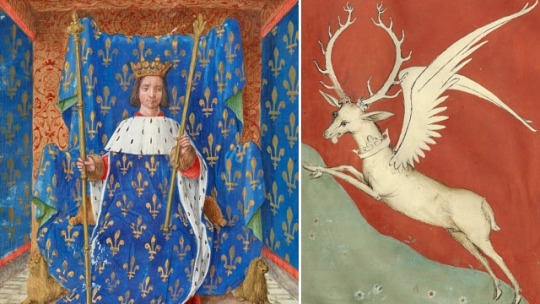
ANECDOTE | Charles VI adopte les cerfs ailés comme supports de ses armoiries ➽ https://bit.ly/CharlesVI-Armoiries-Cerfs Singulières furent les armoiries de Charles VI, qui fit du cerf ailé ou « cerf volant » son emblème de prédilection, non pas d’après l’histoire du cerf trouvé dans la forêt de Senlis qui a tout l’air d’une vision et d’un conte fait à plaisir, mais à la suite d’un songe, seuls Charles VII, Louis XII et François Ier semblant avoir adopté à sa suite ces mêmes supports #roi #Charles VI
8 notes
·
View notes
Text

Joseph Anthony Mugnaini, Le Cerf-Volant d'Halloween, 1972
3 notes
·
View notes
Text
Kite at the end of the world (1958) 风筝 Cerf-volant du bout du monde




Director: Roger Pigot / Wang Jiayi Screenwriter: Roger Pigaud / Antoine Toudard Starring : Patrick de Bardine / Sylviane Rozenberg / Jacques Faburel Genre: Children / Fantasy Country/Region of Production: France/Mainland China Language: French Date: 1958-12-17 (France) Duration: 82 minutes Also known as: The Magic of the Kite IMDb: tt0135834 Type: Crossover
Summary:
Pierrot (Patrick de Bardine), a 12-year-old French boy, and his sister Nicole (Sylviane Rozenberg) accidentally got a kite that had drifted across the ocean from China. The two and their friends regarded the kite as a treasure. In an antique shop, Pierrot learned that the image on the kite was called Sun Wukong. And he found that the letter tied to the kite was from a Chinese boy named Song Xiaoqing. Pierrot wanted to be friends with Song Xiaoqing very much, but Bebot (Gérard Szymanski) snatched the letter with Song Xiaoqing's address. Anxious Pierrot prayed to Sun Wukong, who knew that Sun Wukong actually walked down from the kite alive, and not only that, it also satisfied Pierrot's wish and sent Pierrot and Nicole to China. The brother and sister embarked on a fantasy adventure in this mysterious country.
Source: https://movie.douban.com/subject/2212633/
Link: N/A
#Kite at the end of the world#风筝#Cerf-volant du bout du monde#The Magic of the Kite#jttw media#jttw movie#movie#live action#sun wukong cameo#sun wukong#crossover#SUN WUKONG HELPING FRENCH CHILDREN
4 notes
·
View notes
Text
Il y a longtemps que toute trace de haine pour les Allemands m'a quitté. Et si le nazisme n'était pas une monstruosité inhumaine ? S'il était humain ? S'il était un aveu, une vérité cachée, refoulée, camouflée, niée, tapie au fond de nous-mêmes, mais qui finit toujours par resurgir ? Les Allemands, bien sûr, oui, les Allemands... C'est leur tour, dans l'histoire, et voilà tout. On verra bien, après la guerre, une fois l'Allemagne vaincue et le nazisme enfui ou enfoui, si d'autres peuples, en Europe, en Asie, en Afrique, en Amérique, ne viendront pas prendre la relève.
Romain gary, Les cerfs-volants
8 notes
·
View notes
Photo
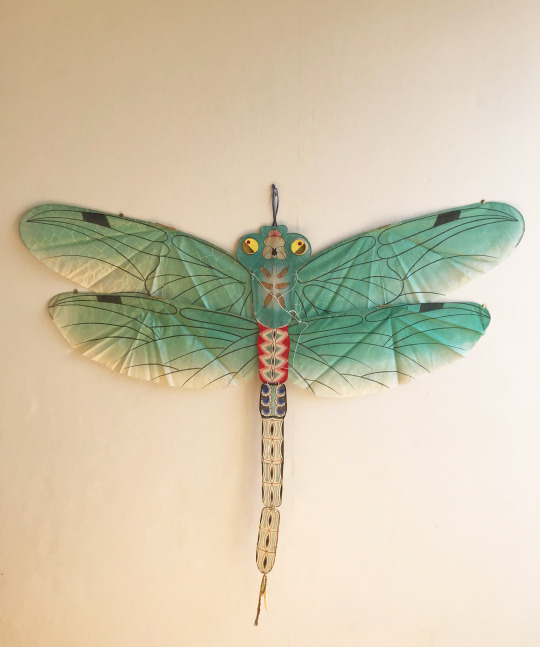
Grand cerf-volant libellule en tissu peint chinois.
2 notes
·
View notes
Text
I love this entire post ♥️♥️♥️ Convoluted etymology for the win!!
This has to be my favourite bit ‘I was disappointed to learn that antelope comes from Greek anthólops which referred to a mythical creature, because I grew up convinced the origin of the word (antilope in French) was anti-lupus, as in, the gazelle is the generic prey so as a concept it’s the opposite of the wolf, the generic predator. Wolf and anti-wolf. Though it raised the question of why we don’t have antilions (zebra), anticats (mice) and antibears (salmons)’ 🤣🤣🤣🤣🤣🤣🤣🤣🤣🤣🤣🤣🤣
I randomly found a 500 page French book on OpenLibrary about the etymology of animal names so here are 10 (ish) fun facts:
the French word for poodle, “caniche” looks like it definitely comes from Latin “canis” (dog) but no! It comes from cane / canard (duck) because it was a waterfowl-hunting dog—and its name in English, Swedish, German, Dutch (poodle, pudel, puedel) also reflects this dog’s affinity with water (from pudeln = to splash about). It’s like otters, whose name come from the same root as water…
the canary on the other hand is named after canis / dog, since it comes from the Canary Islands which, according to Pliny the Elder, were named after the huge dogs that lived there at some point. Some historians think these mysterious big dogs were actually seals or big lizards. Then a bird ended up with the name ‘from the dog place’ though it’s unclear if dogs were ever truly involved. (Meanwhile Spain / Hispania comes from the Phoenician i-shepan-im, the place with rabbits.) I like the idea of ancient humans seeing seals or lizards and going “weird dogs”. Like how ancient Greeks saw hyenas and named them “pigs, I guess?”
the fox has a great diversity of names in Europe: fox / Fuchs, zorro, räv, volpe, raposa, lisu, róka, renard… In French it used to be called ‘goupil’, from the same Latin root as the Italian ‘volpe’, but then the mediaeval cycle of poems known as Le Roman de Renart, about an unprincipled fox named Renart, became so popular that renard became the word for fox and goupil disappeared. It’s like if 500 years from now bears in English were called baloos. (The English and German words for fox come from the indo-european root puk- which means tail, like Hungarian ‘farkas’ (wolf) which means tail-having, or squirrel, from the Greek words for shade + tail, there are actually lots of animals that are just “that one with a tail”…)
French has a word for baby rabbit (lapereau) derived from Latin leporellus (little hare) and we used to have a word for adult rabbit (conin) from Latin cuniculus (rabbit)—related to the German Kaninchen, Italian coniglio, Spanish conejo, etc. But ‘conin’ in Old French also meant pussy (there were mediaeval puns about this in the Roman de Renart) and at some point I guess people were like okay, it was funny at first but we’ve run this joke into the ground, and a new and politically correct word appeared for adult rabbit (lapin) based on the pre-existing word for baby rabbit (lapereau).
The english bear is thought to come from the proto-IE root bher-, for brown—I love how Finnish has so many nicknames and euphemisms for “bear” ranging from “honey palm” to “apple of the forest” and English is like… dude’s brown. Same amount of effort with the Swedish and Danish words for fox, räv / ræv, from a root that means reddish-brown. (And the Hungarian word for lion, oroszlán, along with the Turkish ‘aslan’, comes from proto-Turkic arislan / arsilan which comes from arsil which means brown…) And since brown was already taken, ‘beaver’ (+ German, Dutch, Swedish…: Biber, bever, bäver) has been speculated to come from bhe-bhrus-, a doubling of the original root so… brownbrown.
English foal / German Fohlen / French poulain / Italian puledro all come from the proto-IE root pu- which means small (e.g. Latin puer and Greek pais = child)—then the French ‘poulain’ became ‘poulenet’ with the diminutive -et (so, a smallsmall animal) and poulenet became powny in Scots then pony in English, which was then re-imported by French as ‘poney’. Also the Spanish word for donkey, burro, comes from Latin burricus = small horse, and in French Eeyore is named Bourriquet with the -et diminutive ending, so we just keep taking small horses and turning them into smallsmall horses…
The boa (bo(v)a) shares the same etymology as bovine / bœuf / beef, due to a widespread belief that some snakes suckled milk from cows. Pliny the Elder stated this as fact and (not to bully him but) modern research tells us “there is no empirical basis for saying snakes like mammal milk; experiments, indeed, have shown that captive snakes systematically refuse to drink milk”
I was disappointed to learn that antelope comes from Greek anthólops which referred to a mythical creature, because I grew up convinced the origin of the word (antilope in French) was anti-lupus, as in, the gazelle is the generic prey so as a concept it’s the opposite of the wolf, the generic predator. Wolf and anti-wolf. Though it raised the question of why we don’t have antilions (zebra), anticats (mice) and antibears (salmons)
Many European languages have named kites after some sort of flying animal: in English it comes from the word for owl, in Portuguese from the word for parrot, in Italian from eagle, and in French it’s cerf-volant aka flying-deer. There’s an interesting hypothesis for this! Kites came to Europe from China, where they were often shaped like dragons or snakes, and snake is serpent in French and serpe in Old French, so it’s possible that kites were serpe-volants aka flying-snakes. But the ‘p’ and ‘v’ next to one another were a hassle to pronounce so the p got dropped and it became ser-volant, then ‘ser’ which isn’t a word started being mistaken for ‘cerf’ which is pronounced ‘ser’ but means deer… (We did it again with chauve-souris (bald-mouse = bat), which comes from the Gaulish cawa-sorix aka owl-mouse—which makes more sense as a name for bats! similar to the German Fledermaus, flying-mouse, and Spanish murciélago, blind-mouse. But Gaulish ‘cawa’ was mixed up with Latin ‘calva’ = chauve = bald, so now a French bat is a bald-mouse)
I love etymology, it’s all flying deer and dogs named splash and snakes named cow and ponies named smallsmall and five animals named brown and three named tail—words acquire a veneer of linguistic respectability over the centuries and we forget that fundamentally everyone just says whatever
#language tag#etymology#cerf-volant made me 👀#but then French has pamplemousse#which is in no way a mousse#so
2K notes
·
View notes
Text
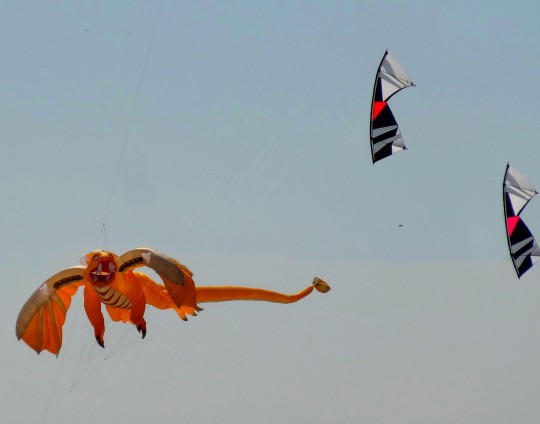

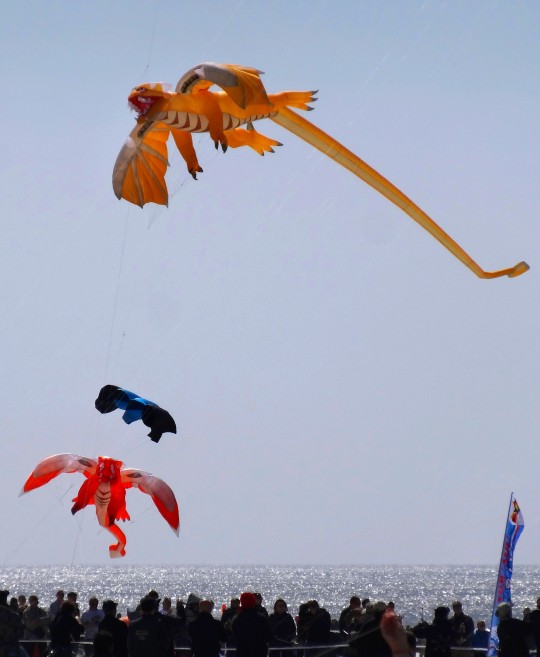
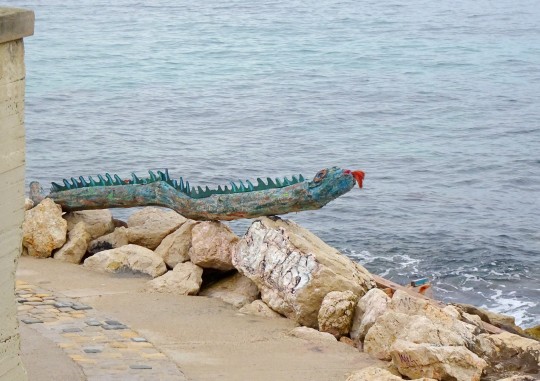
L'année du Dragon arrive !
Une longue série de dragons arrive...
3 photos au festival du cerf-volant à Berck-sur-mer...sauf la dernière, à Marseille, sur la plage du Bain des Dames.
#dragon#année du dragon#monstre#cerf-volant#berck#berck-sur-mer#anse du bain des dames#plage du bain des dames#marseille
11 notes
·
View notes
Text
Patricia Ligouis Fort - Ailleurs
Dans un pli du cœurEntre deux battementsDans le ressac du tempsSans autre repèreQue le flux du sangQui frappe mes artèresJ’attendsQue le destin délibèreL’espace d’un instantQu’il réduise en poussièreMes ailes de géantOmbres d’éphémèreDans les rayons brûlantsA moins qu’il ne libèreLes assauts du ventM’emporte là où j’espèreLéger cerf-volant

View On WordPress
0 notes
Text
i really want to watch les choristes but unfortunately its 10:34 pm and i need to catch up on sleep😞
#everyone watch les choristes immediately!!!#everyone in my choir looooves it#also we’re singing cerf volant (i cant stress how much we love this movie) and it makes me cry every time#and its stuck in my head so im trapped at the brink of tears
1 note
·
View note
Text
If you're ever feeling sad that you're single. Remember that in french being single is called 'célibataire'!
#but then again kite is french is cerf-volant which literally means flying deer#french is weird and not at all romantic#french#language#just be happy no matter what#comforting#cheer up#cheer me up
0 notes
Photo










(via Coussinundefined avec l'œuvre « "Kangaroos in Kinetic Flight: Kites and Kinship" » de l'artiste Art-Vortex-fr)
#findyourthing#redbubble#Kangourous cerfs-volants kinétique énergie saut mouvement symbiose nature vivacité camaraderie Australie ai midjourney
0 notes

